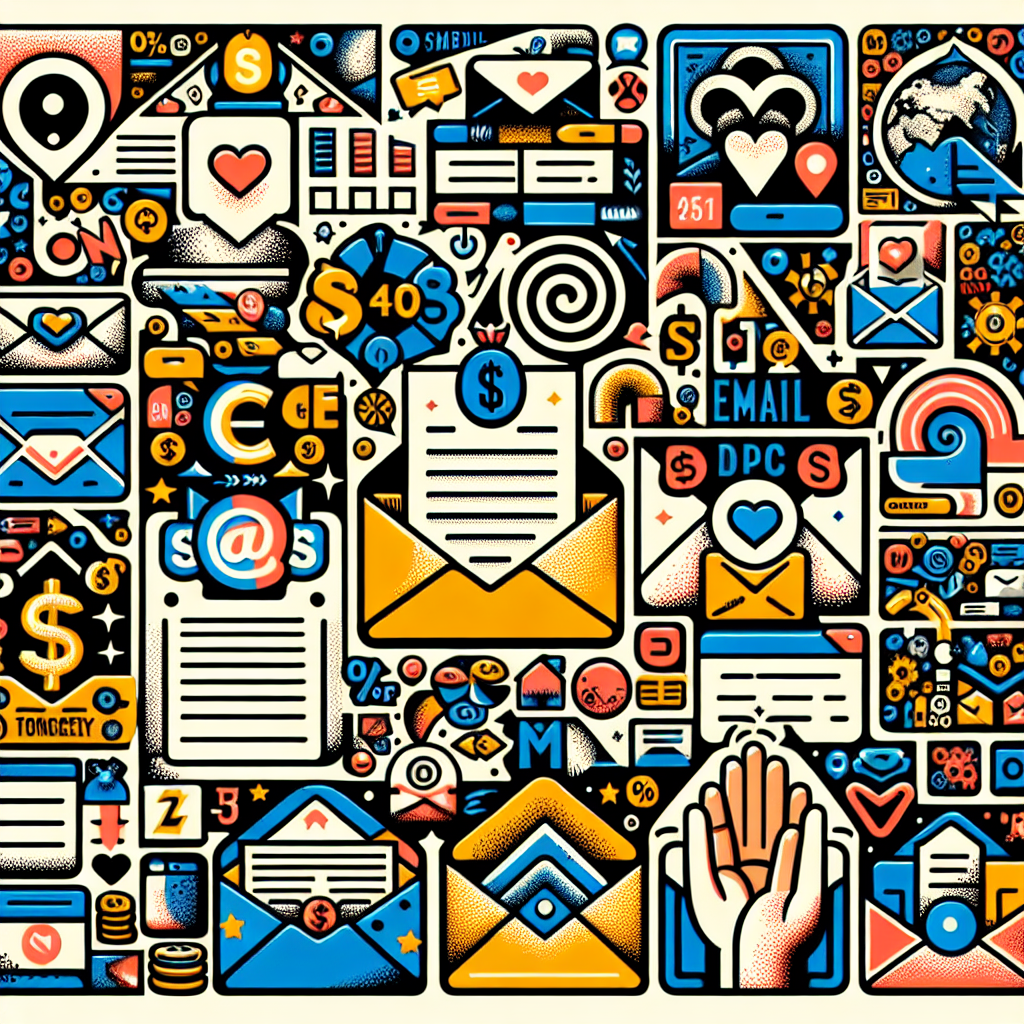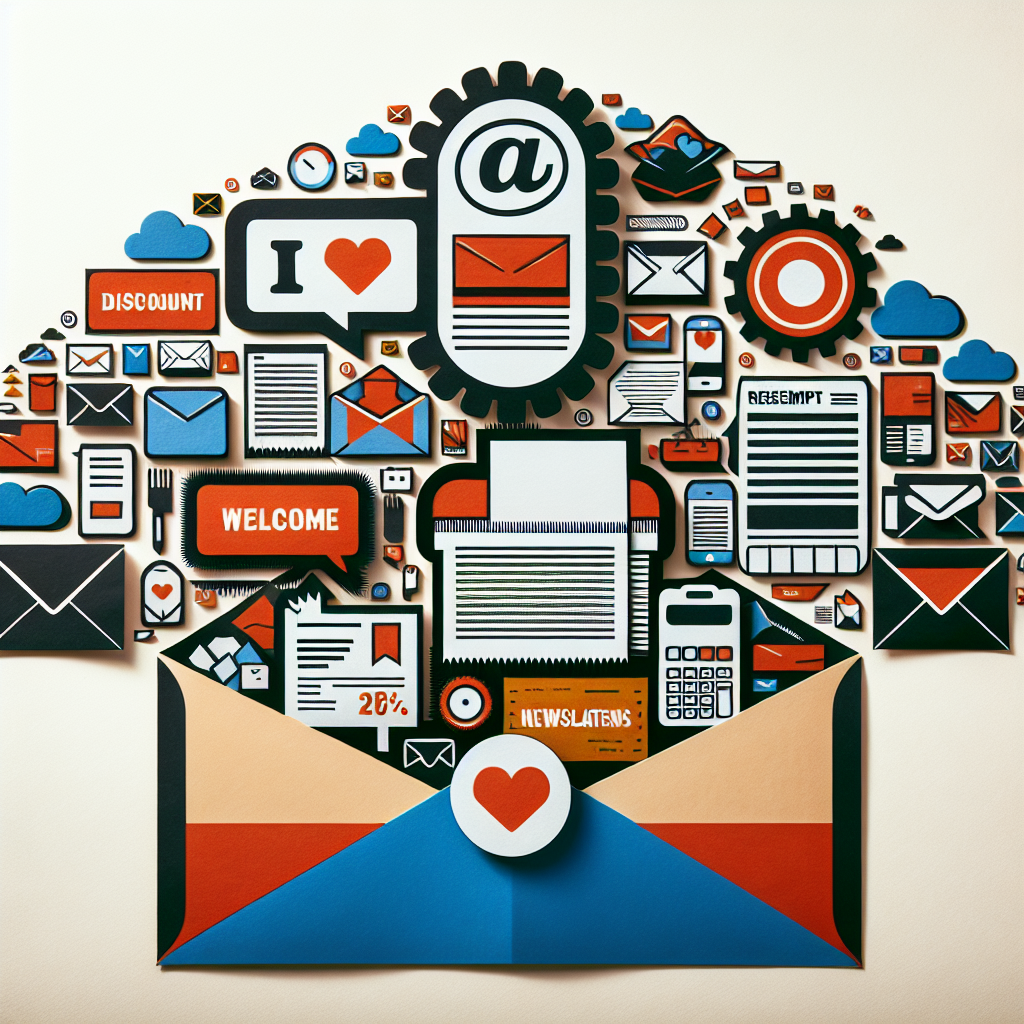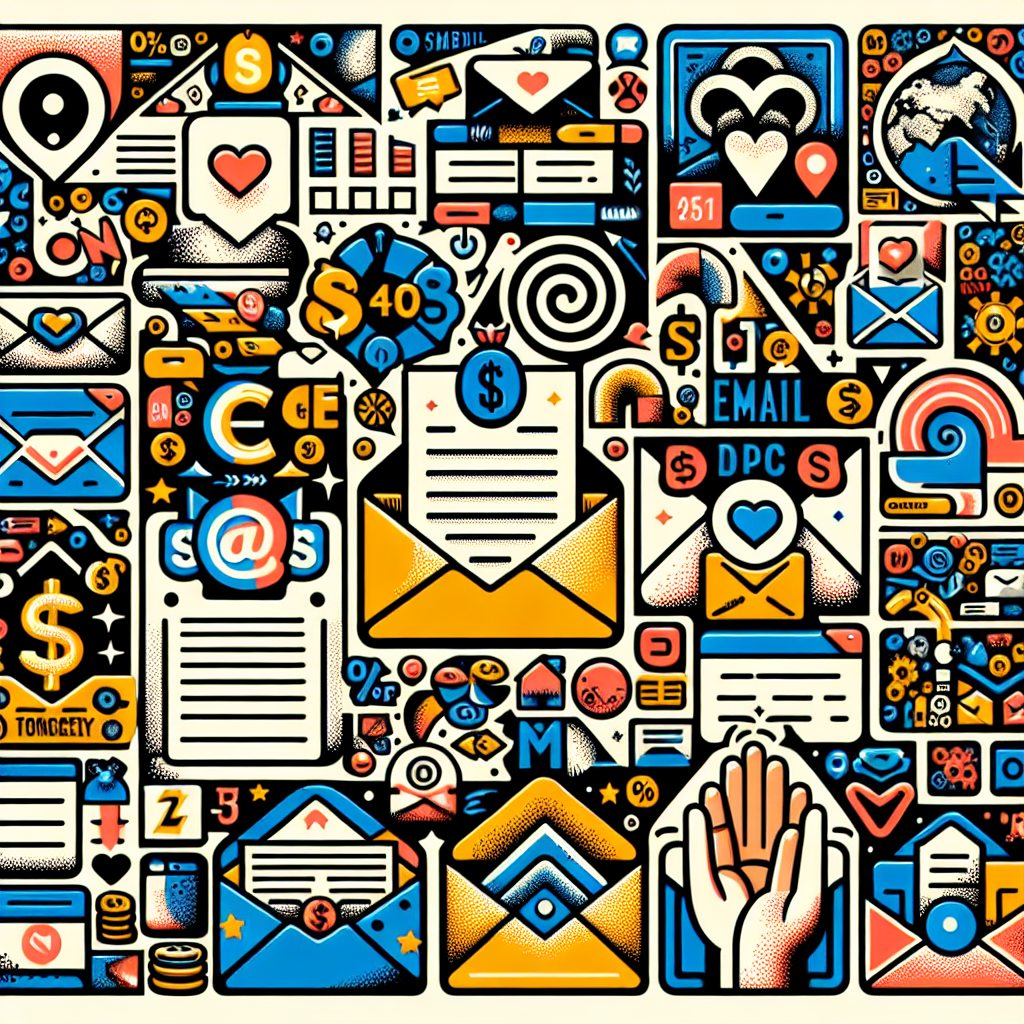Are you curious about the different types of email marketing? Well, you’ve come to the right place! In this article, we will explore the various approaches to email marketing and how they can benefit your business. Whether you’re new to this marketing strategy or looking to refine your current approach, understanding the different types of email marketing will help you effectively engage and connect with your audience. So, let’s dive in and discover the wonderful world of email marketing!
Transactional Email Marketing
Definition
Transactional email marketing refers to the practice of sending automated emails to individuals based on their actions or transactions. These emails are typically triggered by specific events, such as a purchase confirmation, shipping notification, or password reset request. The purpose of transactional emails is to provide relevant and timely information to the recipient, ensuring a smooth and efficient user experience.
Purpose
The main purpose of transactional email marketing is to provide important and valuable information to users at specific points in their customer journey. These emails serve as confirmation and notification tools, delivering relevant updates to customers regarding their interactions with a company’s products or services. By sending these automated emails, businesses can enhance customer satisfaction, build trust, and improve overall engagement.
Examples
Some common examples of transactional emails include order confirmations, shipping notifications, password reset instructions, appointment reminders, and account updates. For instance, when you make a purchase online, you will often receive an email with the details of your order, including the items purchased, the shipping address, and the estimated delivery date. Similarly, when you reset your password for an online account, you may receive an email with instructions on how to create a new password. These emails serve as essential touchpoints, ensuring that customers have the necessary information to proceed with their desired actions.
Direct Email Marketing
Definition
Direct email marketing involves sending personalized promotional emails directly to individuals who have opted to receive communication from a business. Unlike transactional emails, which are triggered by specific events, direct email marketing campaigns are typically sent periodically to a predefined list of subscribers. These campaigns aim to deliver targeted content, raise brand awareness, drive conversions, and maintain ongoing communication with potential and existing customers.
Advantages
Direct email marketing offers several advantages for businesses. Firstly, it allows for highly targeted and personalized communication. By segmenting email lists based on subscriber demographics, behavior, or preferences, businesses can tailor their messages to specific customer segments, thereby increasing relevance and engagement. Additionally, direct email marketing provides measurable results and insights. With the help of email marketing platforms, businesses can track metrics such as open rates, click-through rates, and conversions, enabling them to gauge the effectiveness of their campaigns and make data-driven improvements.
Disadvantages
While direct email marketing can be a powerful tool, there are also some potential disadvantages to consider. One challenge is ensuring deliverability, as emails may end up in spam folders or be blocked by email filters. To overcome this, businesses should implement best practices for email authentication and follow industry guidelines to minimize the risk of emails being marked as spam. Another potential drawback is the risk of email fatigue or subscriber attrition. If businesses send too many or irrelevant emails, subscribers may become overwhelmed or unsubscribe from the mailing list. It is essential to strike a balance between frequency, relevancy, and value to maintain a healthy subscriber base.

Mobile Email Marketing
Definition
Mobile email marketing refers to the practice of optimizing email campaigns for mobile devices, such as smartphones and tablets. With the ever-increasing use of mobile devices for accessing emails, it is crucial for businesses to ensure that their email content, layout, and design are mobile-friendly. By adapting emails to the smaller screens of mobile devices, businesses can deliver a seamless and engaging user experience, regardless of the device used by the recipient.
Benefits
Optimizing email campaigns for mobile devices offers numerous benefits. Firstly, it enhances accessibility and reach, allowing businesses to connect with a wider audience. With the prevalence of smartphones and the convenience they offer, people are increasingly accessing emails on their mobile devices. By ensuring that emails are mobile-responsive, businesses can deliver their messages to users wherever they are, increasing the chances of engagement and conversions. Additionally, mobile email marketing can lead to improved engagement and conversions. Emails that are designed and tailored specifically for mobile devices have a higher chance of capturing the attention of recipients and prompting them to take desired actions, such as clicking on links or making purchases.
Considerations
When implementing mobile email marketing, there are a few key considerations to keep in mind. Firstly, mobile optimization should encompass responsive design, ensuring that emails automatically adapt to different screen sizes and orientations. This includes using mobile-friendly fonts, images, and layouts, as well as optimizing loading times for mobile networks. Secondly, it is essential to prioritize concise and scannable content, as mobile users tend to have shorter attention spans and limited screen space. Businesses should focus on delivering clear and compelling messages that can be quickly understood and acted upon. Finally, testing is crucial to ensure optimal user experience across different mobile devices and email clients. Regularly testing emails on various devices and using email testing tools can help identify and address any compatibility or display issues.
Behavioral Email Marketing
Definition
Behavioral email marketing involves the use of personalized and automated emails based on individual user behavior and preferences. By tracking and analyzing user actions, such as website browsing patterns, email interactions, or purchase history, businesses can segment their email lists and send targeted messages designed to resonate with each recipient. Behavioral email marketing aims to deliver relevant content at the right time, nurturing customer relationships, and driving conversions based on specific behavioral triggers.
Benefits
The benefits of behavioral email marketing are manifold. Firstly, it enables businesses to provide highly personalized and relevant content to their subscribers. By leveraging user behavior data, businesses can send tailored recommendations, exclusive offers, or reminders based on individual preferences and actions. This personalization increases the chances of engagement and conversions, as recipients are more likely to respond positively to messages that align with their interests and needs. Secondly, behavioral email marketing allows for increased automation and efficiency. Once the necessary triggers and workflows are set up, businesses can send timely and targeted emails without manual intervention, saving time and resources.
Implementation
To implement behavioral email marketing effectively, businesses need to collect and analyze relevant user data. This includes tracking user behavior on websites, recording email interactions, and capturing purchase or browsing history. Email marketing platforms with built-in behavioral tracking and segmentation capabilities can simplify this process, allowing businesses to automatically categorize subscribers based on their behavior. Once the necessary data is collected, businesses can create and schedule email campaigns that target specific segments with personalized content. Examples of behavioral triggers include abandoned cart emails, product recommendation emails, or re-engagement emails for inactive subscribers. Regular analysis and refinement of email campaigns based on user response and feedback are also essential to drive continuous improvement.

Drip Email Marketing
Definition
Drip email marketing refers to the practice of sending a series of automated emails to subscribers over a specific period. These emails are typically scheduled based on predefined triggers or intervals, aiming to nurture leads, educate customers, or guide prospects through a sales funnel. With drip email marketing, businesses can deliver relevant and timely content to subscribers, gradually building relationships and guiding them toward desired actions.
Benefits
Drip email marketing offers several benefits for businesses. Firstly, it allows for targeted and personalized communication throughout the customer journey. By mapping out a series of emails based on different stages or triggers, businesses can deliver content that aligns with the needs and interests of subscribers at each stage. This helps build trust and credibility, as subscribers receive valuable information that is relevant to their current position in the sales funnel. Secondly, drip email marketing improves efficiency and time management. Once the drip campaign is set up, businesses can automate the entire process, allowing email sequences to be delivered automatically without manual intervention.
Best Practices
To make the most of drip email marketing, it is important to follow best practices. Firstly, businesses should clearly define their goals and objectives for each drip campaign, ensuring that the content aligns with these objectives. Whether the objective is to educate, engage, or convert, knowing the desired outcome will help shape the email content and calls to action. Secondly, segmentation is key. Businesses should segment their email lists based on relevant criteria such as demographics, behavior, or engagement level. This allows for personalized and targeted content that resonates with specific subscriber segments. Lastly, it is crucial to monitor and analyze campaign performance. Tracking metrics such as open rates, click-through rates, and conversions can provide valuable insights into the effectiveness of the drip campaign. Based on these insights, businesses can make data-driven adjustments and optimizations to improve future campaigns.
Newsletter Email Marketing
Definition
Newsletter email marketing involves sending periodic newsletters to subscribers, providing them with relevant and engaging content related to a business’s industry, products, or services. Newsletters typically consist of curated articles, updates, promotions, or exclusive offers, aiming to build audience loyalty, nurture relationships, and drive traffic to the business’s website or blog.
Content Strategy
An effective content strategy is crucial for successful newsletter email marketing. Firstly, businesses should identify their target audience and understand their interests, pain points, and preferences. This will help tailor newsletter content to meet the needs and expectations of subscribers. Secondly, businesses should aim for a good balance between original and curated content. While original content allows businesses to showcase their expertise and unique insights, curated content from reputable sources can add value and broaden the scope of the newsletter. Additionally, including visually appealing images or multimedia elements can enhance engagement and make the newsletter more visually appealing.
Design Tips
When it comes to the design of newsletter emails, there are several key tips to keep in mind. Firstly, a clean and clutter-free layout is essential for readability and user experience. Business should use a consistent and visually appealing design that aligns with their brand identity. Secondly, businesses should optimize their emails for both desktop and mobile devices. This includes using responsive design, mobile-friendly fonts and images, and maintaining a balance between text and visuals. Lastly, clear and compelling calls to action should be included, prompting recipients to take desired actions such as visiting a website, making a purchase, or sharing the newsletter with others. A combination of eye-catching graphics and persuasive copy can drive higher click-through rates and conversions.
Lead Nurturing Email Marketing
Definition
Lead nurturing email marketing is a strategy that involves sending automated, personalized emails to leads or prospects to guide them through the sales funnel and build relationships. These emails are designed to provide valuable information, address pain points, overcome objections, and ultimately move leads closer to conversion. Lead nurturing email marketing is focused on establishing trust, nurturing ongoing communication, and ensuring that leads are engaged and well-informed.
Sales Funnel Alignment
To effectively align lead nurturing emails with the sales funnel, businesses should map out their customer journey and identify the key touchpoints or stages where email communication can make a significant impact. This typically includes lead generation, lead qualification, lead nurturing, and conversion. For each stage, businesses should create tailored email campaigns that address the specific needs, pain points, or objections of leads. By providing relevant and timely content that supports the buyer’s journey, businesses can increase the chances of conversion and improve overall sales effectiveness.
Nurturing Techniques
Lead nurturing email marketing employs various techniques to engage and nurture leads effectively. Firstly, businesses can use educational content to provide value and establish credibility. This can include informative guides, expert tips, case studies, or industry insights that address common pain points or challenges faced by leads. Secondly, personalization is key. By segmenting leads based on relevant criteria and sending personalized emails based on their interests or behaviors, businesses can deliver more targeted messages that resonate with individual recipients. Additionally, incorporating social proof, such as customer testimonials or success stories, can help build trust and overcome any skepticism or doubts leads may have. Furthermore, using interactive elements like quizzes or surveys can encourage engagement and create a two-way conversation with leads.
Reengagement Email Marketing
Definition
Reengagement email marketing refers to the practice of sending targeted emails to inactive or disengaged subscribers in an effort to rekindle their interest and encourage them to re-engage with a business. These emails typically aim to remind recipients of the value they can derive from the business’ products or services and provide incentives or offers to entice them back.
Win-back Strategies
To implement successful reengagement campaigns, businesses can leverage various win-back strategies. Firstly, businesses can send personalized emails that acknowledge the subscriber’s previous engagement or relationship with the business. This helps create a sense of familiarity and reminds the recipient of their previous interest. Secondly, offering special incentives or exclusive discounts can be an effective way to motivate inactive subscribers to take action. This could include offering a limited-time discount, a free trial, or access to exclusive content. Lastly, leveraging social proof through testimonials, success stories, or social media mentions can remind recipients of the value others have derived from the business, potentially sparking their interest once again.
Reactivation Campaigns
Reactivation campaigns involve a series of targeted emails sent to inactive subscribers over a specific period. These campaigns typically start with a gentle reminder email, highlighting the recipient’s previous activity or interaction with the business. Subsequent emails can gradually increase in urgency or offer additional incentives to encourage re-engagement. By using compelling subject lines, eye-catching visuals, and persuasive copy, reactivation campaigns can help businesses regain the attention and interest of disengaged subscribers. Monitoring engagement metrics throughout the campaign allows businesses to gauge the effectiveness of their reengagement efforts and make adjustments as needed.
Abandoned Cart Email Marketing
Definition
Abandoned cart email marketing involves sending automated emails to individuals who have added items to their shopping cart but did not complete the purchase. These emails are aimed at reminding and encouraging users to return to the website and complete their transaction. Abandoned cart emails typically include details of the items left behind, personalized recommendations, and incentives to overcome any hesitations or obstacles the user may have.
Importance
Abandoned cart email marketing is crucial for businesses as it helps recover potential revenue that would otherwise be lost. Research shows that a significant portion of online shopping carts are abandoned, often due to reasons like distraction, price comparison, or concerns about the purchase. By sending targeted and timely reminders, businesses can re-engage with these potential customers and guide them back to complete the purchase. Recovering abandoned carts can boost sales, improve conversion rates, and generate valuable customer insights.
Effective Techniques
To maximize the effectiveness of abandoned cart email marketing, businesses can employ several techniques. Firstly, timing is crucial. Sending the first reminder email shortly after the cart is abandoned, typically within 24 hours, helps capitalize on the user’s initial interest and increase the chances of conversion. Additionally, personalization is key to creating meaningful connections with users. Including details of the specific items left behind, showcasing product recommendations based on their browsing history, or addressing any concerns they may have expressed can significantly increase the effectiveness of abandoned cart emails. Furthermore, offering incentives, such as limited-time discounts, free shipping, or rewards, can provide added motivation for users to return and complete their purchase. Finally, using persuasive and visually appealing elements, such as compelling subject lines, clear calls to action, and eye-catching visuals, helps grab the recipient’s attention and increase engagement.
Personalized Email Marketing
Definition
Personalized email marketing involves tailoring email content and messages based on individual user preferences, behavior, or demographic information. By leveraging data and automation, businesses can send highly relevant and personalized emails that resonate with recipients, fostering a deeper connection and enhancing engagement.
Benefits
The benefits of personalized email marketing are numerous. Firstly, it allows businesses to deliver targeted content that addresses the unique needs, interests, or pain points of each recipient. By personalizing emails, businesses can increase the relevance and value of the messages, making recipients more likely to open, read, and take action. Secondly, personalized email marketing enhances customer experience and satisfaction. When customers receive emails that are tailored to their preferences and demonstrate a genuine understanding of their needs, it fosters a sense of loyalty and strengthens the relationship with the brand. Personalization can lead to higher engagement metrics, such as open rates, click-through rates, and conversions, ultimately driving business growth.
Personalization Tactics
To implement personalized email marketing effectively, businesses can employ various tactics. Firstly, leveraging user data and segmentation allows businesses to divide their email list into meaningful segments based on factors such as location, past purchases, or browsing behavior. This segmentation enables businesses to send more targeted emails that resonate with specific groups of recipients. Secondly, dynamic content allows for real-time personalization within emails. By including dynamic elements, such as personalized product recommendations, location-based offers, or custom greetings, businesses can deliver content that is tailored to the recipient’s individual preferences or characteristics. Additionally, using automation and triggers enables businesses to send personalized emails based on specific behaviors, such as completing a purchase, abandoning a cart, or subscribing to a newsletter. By automating these personalized touchpoints, businesses can deliver highly relevant messages without manual intervention.
